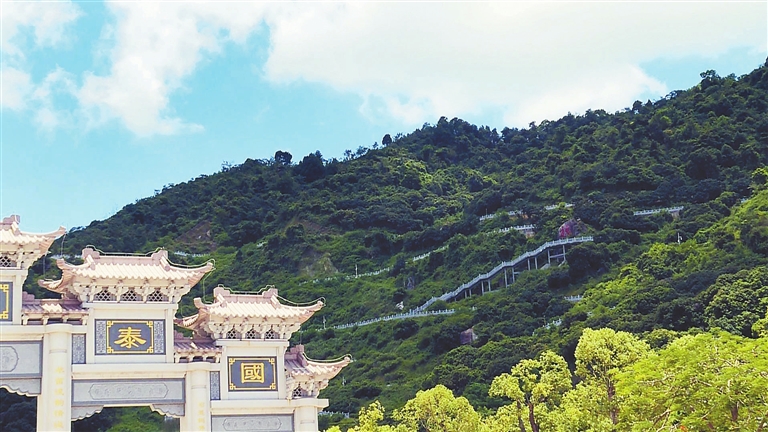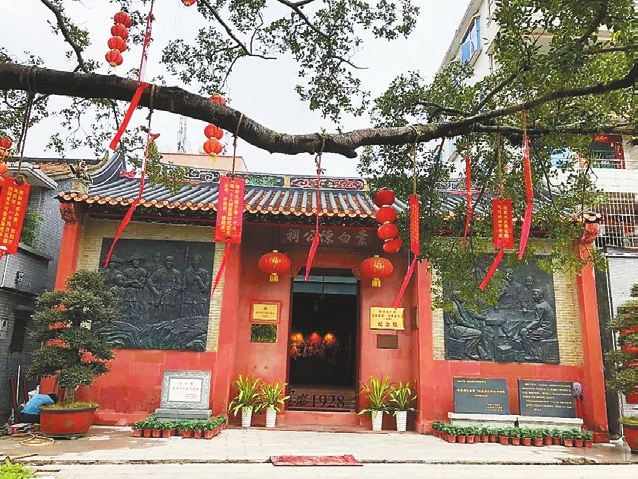

THE Department of Culture and Tourism of Guangdong Province recently released its lists of the third batch of culture and tourism characteristic villages, and of selected rural tourism routes. The Shangwei Art Village and the New Who Art Village in Longhua District, Shenzhen figured among the former list while the Bao’an Red-themed tourist route and Yantian Red-themed coastal trip were included in the latter. In this issue, we take a tour on the Bao’an route. Bao’an red-themed route Bao’an District enjoys advantageous geological environment and beautiful natural environment. It has rich cultural and historical resources. To facilitate the integrated development of Red-themed culture and tourism, the Culture, Radio, Television, Tourism and Sports Bureau of Bao’an District has planned and released a Bao’an Red-themed tourist route. The route links the First Congress of the CPC Bao’an County Committee Memorial Hall, the former site of the Dongbao Administration Supervision Office, the Revolution History and Culture Corridor at Yangtai Mountain Talents Gathering Pavilion, and the Shenzhen Bao’an Labor Museum. Bao’an County, which was the former name of Shenzhen, is one of the first areas in Guangdong to set up Communist Party of China (CPC) organizations. Since 1924, peasant movements had developed in the Songgang, Shajing and Gongming areas in Bao’an under the guidance of the CPC Guangdong Provincial Committee. In July 1925, the CPC Bao’an branch was set up and the first congress of the CPC Bao’an County Committee, with 19 attendees, was held Feb. 23, 1928 at the Chen Ancestral Hall in Songgang. In April and May that year, three worker-and-peasant revolutions broke out. The congress showed the CPC’s bravery and struggles for people’s liberation. The revolutionary spark ignited a mighty flame of the red revolution spreading in Bao’an. In 2001, the site was renovated into a memorial hall, with old iron weapons, documents and photos on display. Located in Yanluo Subdistrict in Bao’an District, the former site of the Dongbao Administration Supervision Office is at the ancestral hall of Chen Zepei. The building was built in the style of late Qing Dynasty (1644-1911)architecture. During the anti-Japanese war period, the ancestral hall served as the Dongbao Administration Supervision Office. Covering a total area of nearly 400 square meters, the architecture has a brick-wood structure. Its gates, eaves, columns, wall bases and wall corners were all built with granite. There are also walls and gate towers that were built in recent years. In March 1999, Bao’an District Government included it in the first batch of district-level culture relic protection sites. Located in Shiyan Subdistrict, Bao’an District, the Shenzhen Bao’an Labor Museum is the first museum focused on the history of contract employees in the country. It witnessed the 40 years of reform and opening up of Shenzhen. The museum collects and showcases historical materials and cultural relics of contract employees, studies their history, and serves as an education base in this regard. The museum used to be the Shangwu Production Brigade Heat Coil Factory. In 2011, it was recognized as one of the first Red-themed tourist sites in Shenzhen. Located at the intersection of Bao’an, Nanshan and Longhua districts, Yangtai Mountain stands at an altitude of 587 meters. It’s the highest peak in northwest Shenzhen. In 2008 the mountain was rated one of the eight scenic spots of Shenzhen by the Shenzhen government. There are many charming cultural and natural landscapes on the mountain. Among them, the Yangtai Mountain Waterfall is a must-see. With over 10 reservoirs spreading out around the base of the mountain, it is also an important source of much of the city’s drinking water. There are a total of six modern and contemporary revolutionary sites including the Longyan Village stone cave, the former battleground, Yangtai Mountain anti-Japanese base and the anti-Japanese guerrilla secret reception station on Yangtai Mountain. (Chen Xiaochun) | 
